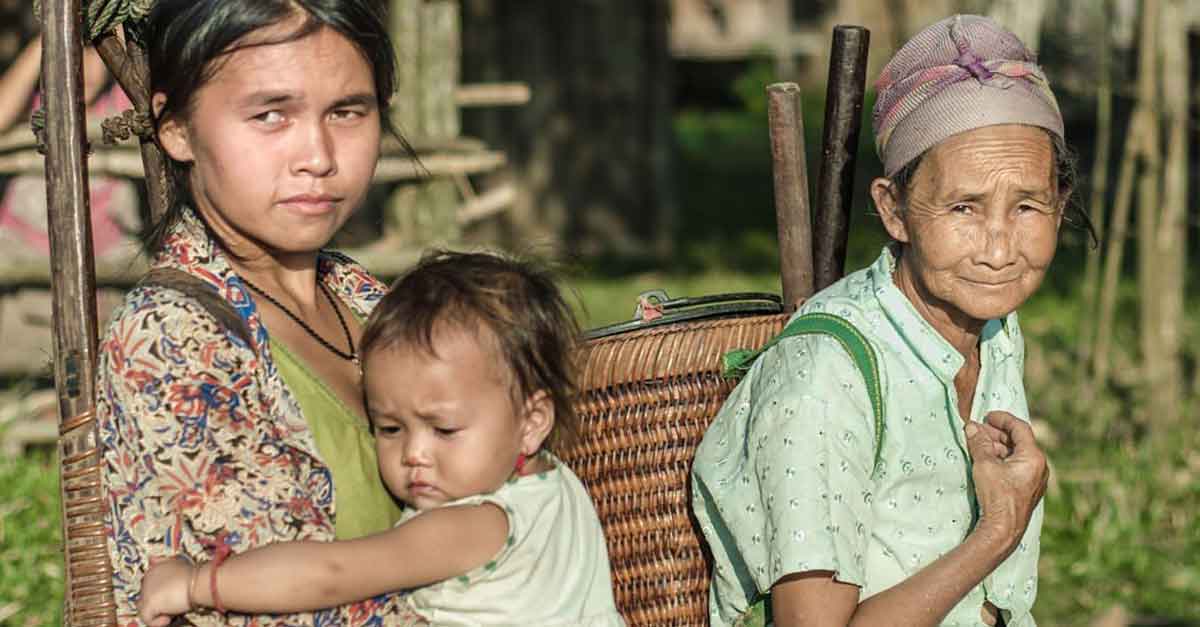Inequality, disaster risk key factors to overcome in Laos’ aspiration to shed Least Developed Country status by the revised target of 2024, says UNDP.
“Graduation from LDC status can happen by improving the education levels among our people who are healthy, live in a sustainable manner and have the creativity that fuels the innovation process and inclusive economic growth”.
– Dr Kikeo Chanthaboury, Deputy Minister of Planning and Investment.
“The risk that unpredictable occurrences like natural disasters impact existing development gains is high. This pertains even to a high growth rate economy like Lao PDR”
– UNDP Deputy Resident Representative, Mr Balasubramaniam Murali.
While the gap in terms of goods is too not hard to spot in Laos, economic inequality also plays out critically in access to services including health and education.
The cumulative impact of inequality affects the opportunities available for the less prosperous in Laos.
Inequality is a key factor to overcome in Laos’ aspiration to shed its Least Developed Country Status by the revised target of 2024.
The country’s capacity to graduate from this status depends on the results of the efforts are being made to tackle these issues.
Fortunately, it seems the country is moving in the right direction in terms of better access to essential services.
Providing the latest on its internationally supported efforts to help the government address inequality in Laos, the United Nations Development Programme (UNDP) has published a statement entitled:
“As Lao PDR prepares for LDC Graduation, inequality has to be overcome: UNDP’s annual statistical update points out challenges and successes”.
Vientiane, 29 October 2018 – In light of UNDP’s latest statistical update on human development indices and indicators, launched recently, Lao PDR appears to be continuing on its path towards graduation from Least Developed Country status in 2024.
According to the update, Lao PDR’s Human Development Index (HDI) value which is calculated based on the life expectancy, level of education and income per capita of a country’s people, has increased by over 50 per cent since 1990.
In 2017, the country’s life expectancy reached 67 years, while the Gross National Income (GNI) per capita reported in 2018 is US$1996.
In order to graduate from Least Developed Country (LDC) status, Lao PDR needs to pass two of three thresholds.
The country’s GNI per capita and Human Assets Index (HAI) has reached the required eligibility value, whereas the target for the Economic Vulnerability Index (EVI) remains to be met. Lao PDR’s low resilience to shocks and instability remains a concern, particularly during a time, when various parts of the country are suffering from severe flooding.
According to UNDP’s statistics, inequality remains one of the major challenges in Lao PDR. When Lao PDR’s HDI value is adjusted for inequality, it decreases by over 26%.
The average decrease for other countries in the region is slightly over 15%. Vast inequalities are particularly alarming in a disaster situation, as people with low incomes and difficult access to services often struggle the most with recovery.
“The risk that unpredictable occurrences like natural disasters impact existing development gains is high,” UNDP Deputy Resident Representative, Mr Balasubramaniam Murali said.
“This pertains even to a high growth rate economy like Lao PDR.”
Deputy Minister of Planning and Investment Dr Kikeo Chanthaboury believes that the data concentrating on more than just economic scales is essential for sustainable and equitable development:
“UNDP’s human development data compilation and analysis helps us to forecast and plan a better future, especially when it comes to the quality of development,” Dr Kikeo said.
“If Lao PDR is to avoid the middle-income trap, among others, we have to find diversified avenues for growth, design strategies for continued economic transformation right from the start, and invest in transforming education and health systems in a way that will equip the labour force and whole population to continuously adapt.
“In particular, the graduation from LDC status can happen by improving the education levels among our people who are healthy, live in a sustainable manner and have the creativity that fuels the innovation process and inclusive economic growth”.
Currently, the inequality in education in Lao PDR is at 34%, which is close to the worldwide average for LDCs.
Lao PDR has, along with most of the developing world, taken major strides forward in almost all categories of human development over the past three decades.
Remaining gaps in opportunities, achievements and empowerment are a key source of inequality in many developing countries.
Lao PDR’s process of moving towards LDC graduation will be strengthened even further when economic growth can be complemented by high-quality human development interventions.
– United Nations Development Programme in Lao PDR



